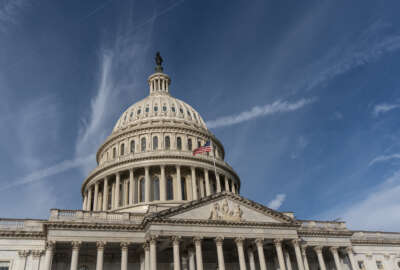Agencies earning a ‘profit’ from contract fees
GAO found four of six governmentwide acquisition contracts ended up with \'excess revenue\' for the agency in each of the last four years. GSA\'s schedules programs...
wfedstaff | June 4, 2015 11:00 am
By Jason Miller
Executive Editor
Federal News Radio
Four agencies are making a “profit” off their governmentwide multiple award acquisition contracts. And the General Services Administration has built up a reserve of more than $800 million.
The Government Accountability Office reviewed the fees charged by GSA, NASA, the National Institutes of Health and the Interior Department to other agencies to use their governmentwide acquisition contracts. Auditors found four out of six contracts or services reviewed brought the agency “excess revenue” ranging from $1.7 million to $62 million a year.
Agencies are prohibited from making a “profit,” but are able to keep excess revenue from services they provide under certain circumstances.
Auditors said GSA and Interior maintain reserves within their respective revolving funds, which are used to operate their interagency contract programs, to be used for two things: an operating reserve for near-term operating costs and a capital investment reserve for improvements to equipment or processes that benefit the program.
“Reserve funds provide programs with management flexibility, but if a program consistently accumulates excess fee revenue in reserves, this excess could indicate that the fee rate is set higher than needed to recover costs and could possibly be reduced,” GAO stated in its report.
Two GSA services lost money over the last four years on average. GSA’s Assistant Acquisition Service and its Networx multiple award telecommunications fell short on average $7.7 million and $4.7 a year, respectively, between fiscal 2007 and 2010.
GSA uses their excess revenue to help make up for losses in other services.
“At the end of fiscal year 2010, the combined balance of GSA’s three reserves was over $800 million-about $350 million of which resides in the Working Capital Reserve that is to cover shortfalls in operating funds,” GAO stated. “GSA’s reserve balances have grown significantly in recent years, largely due to the excess revenue generated annually by GSA’s largest interagency contract program, which is the [schedules] program. [T]he [schedules] program has generated over $62 million on average annually in recent years. Although GSA reviews all programs’ fee rates annually as part of its budget process, there is nothing in GSA’s internal guidance that would trigger an evaluation of the fee rate of an individual program that consistently generates excess revenue resulting in the continuous growth of reserve balances.”
GSA charges .75 percent to agencies using the schedules, 7 percent for the Networx contract and 1 percent to 12 percent for assisted acquisition services.
NASA charges .45 percent to agencies to use its SEWP contract, while NIH .25 percent-to-1 percent to use one of its three governmentwide acquisition contracts. Interior charges agencies 2 percent-to-5 percent for assisted acquisition services.
Most of the time, agencies use fees instead of receiving appropriations from Congress to cover the costs of doing business.
“Fee rates for all of interagency contracting programs we reviewed remained relatively stable from fiscal years 2007 through 2011,” GAO found. “Two of the programs-NASA’s and NIH’s GWACs-lowered their fee rates during this period and one program-DOI’s Assisted Acquisition Services-plans a slight increase in fees for fiscal year 2012.”
But auditors found as agencies used these services or contracts more often, not every agency lowered their fees.
GSA, for instance, saw growth in all three of its contracts or services-anywhere from 6.1 percent to 31.1 percent–GAO reviewed, but the agency didn’t lower its fees during the time period.
On the other hand, NASA saw SEWP’s usage grow by 137 percent-from $996.5 million to $2.3 billion over four years-but decreased its fees by .05 percent last November.
These six contracts generated more than $50 billion in revenue annually during the time period GAO reviewed.
GAO offered two recommendations for GSA and one for Interior. The audit agency said GSA should begin tracking cost information on the Networx contract at the program level to enable agency managers to identify possible inefficiencies in the program, and develop and implement guidance for evaluation of current fee rates when an individual program consistently transfers excess revenue to the reserve funds.
Interior’s National Business Center should revisit the assignment of costs of its Assisted Acquisition Services program to ensure that the overhead costs of the program are properly assigned between its two offices to ensure that each carries its fair share of the overhead costs consistent with cost recovery principles.
RELATED STORIES:
Woytek talks success and future of NASA SEWP
Industry group encourages DoD to use GSA
(Copyright 2011 by FederalNewsRadio. All Rights Reserved.)
Copyright © 2025 Federal News Network. All rights reserved. This website is not intended for users located within the European Economic Area.





